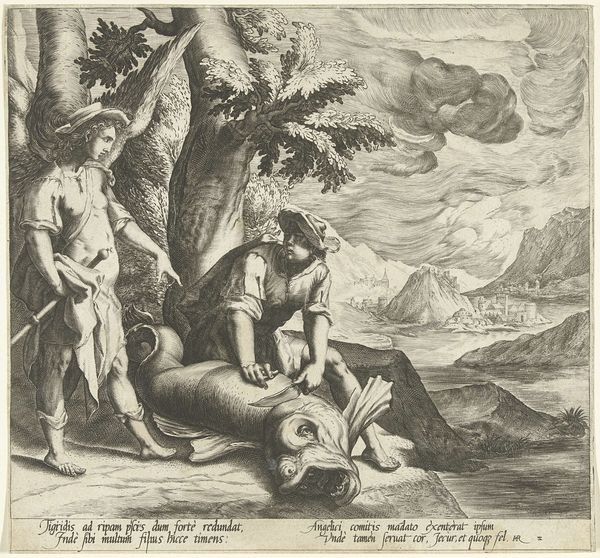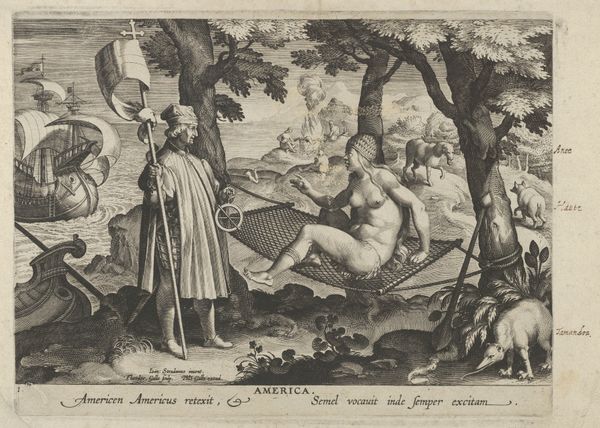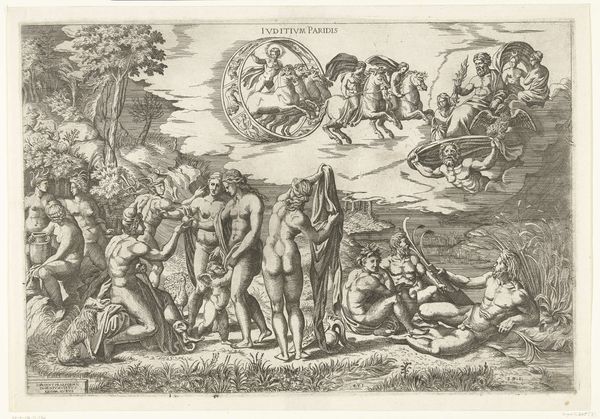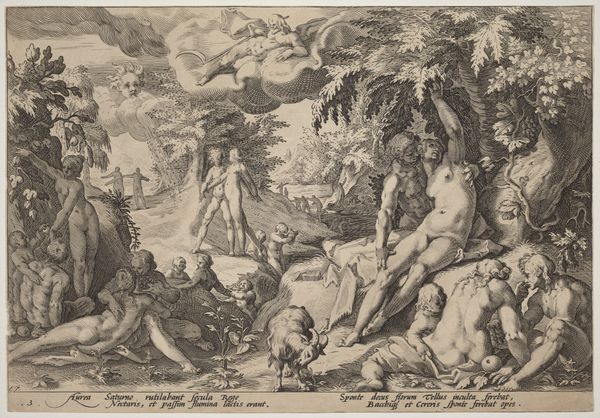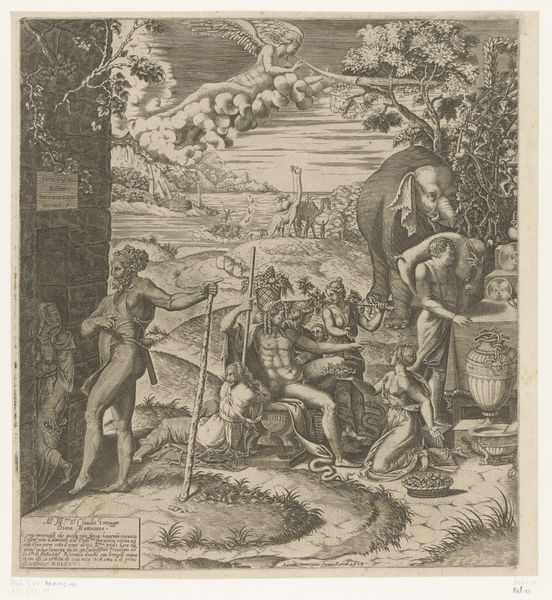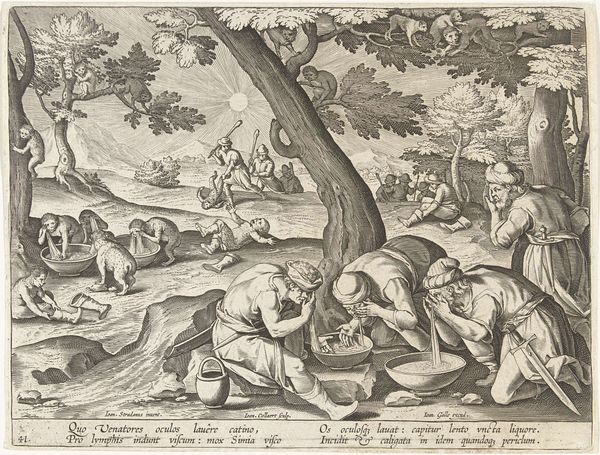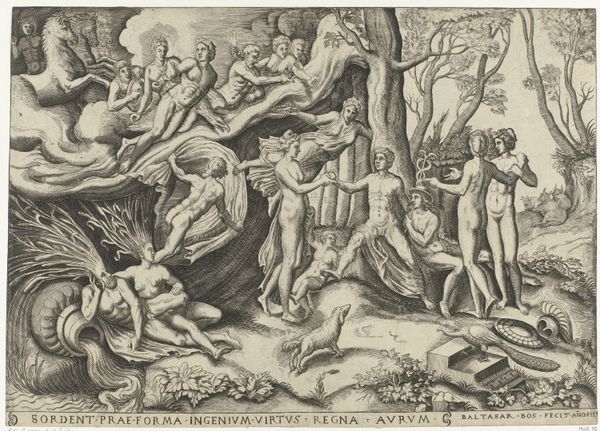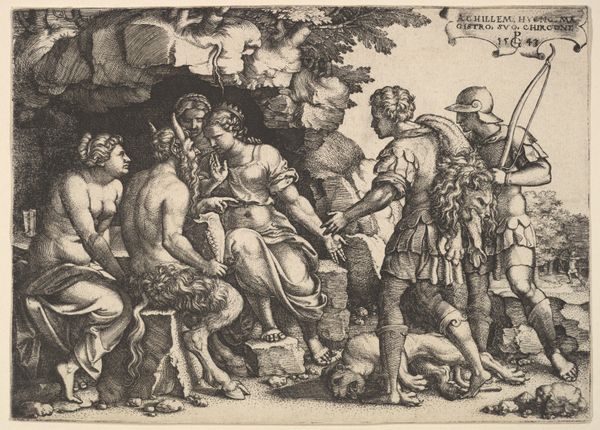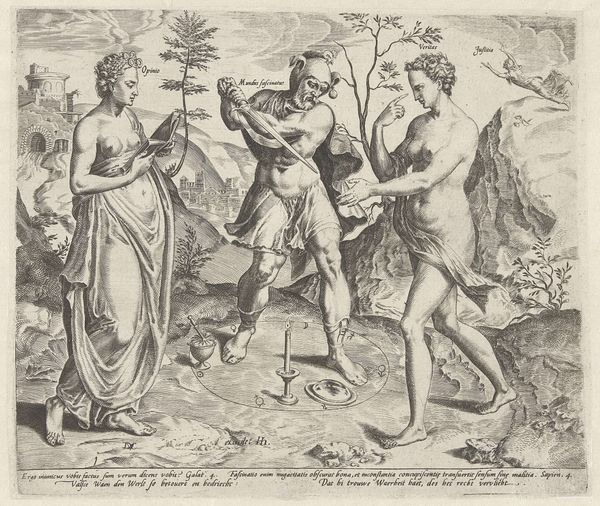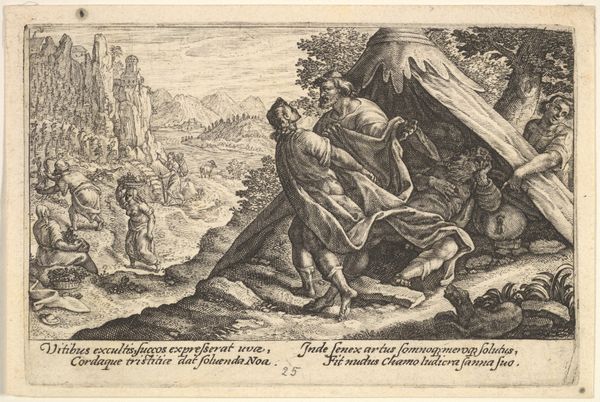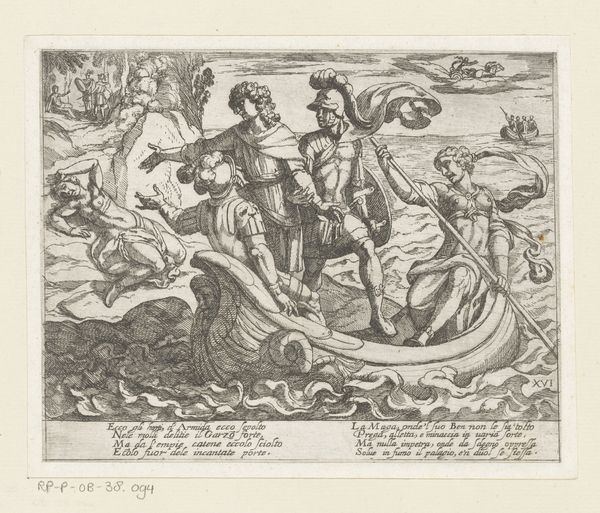
print, engraving
#
allegory
#
baroque
# print
#
old engraving style
#
landscape
#
figuration
#
history-painting
#
engraving
Dimensions: height 194 mm, width 235 mm
Copyright: Rijks Museum: Open Domain
Crispijn van de (II) Passe created this print of ‘The Judgement of Paris’ sometime in the first half of the 17th century. It depicts a famous scene from Greek mythology, loaded with ideas about beauty, power, and the male gaze. Made in the Netherlands, this engraving refers to the tale of Paris, a Trojan prince asked to judge which of three goddesses - Hera, Athena, or Venus - was the fairest. The story, as rendered here, uses the visual codes of the classical world to frame notions of female beauty. But it’s also about power. Paris's decision has consequences for the Trojan war, influenced by bribes of political power and military might. Was this work commissioned, or produced for the open market? Either way, the story it tells seems conservative, reinforcing existing power structures. To truly understand this print, we can turn to sources on the history of mythology in art and on the patronage systems that supported artists like Passe in the 17th century. Art is always contingent on the social conditions that shape its creation and reception.
Comments
No comments
Be the first to comment and join the conversation on the ultimate creative platform.
